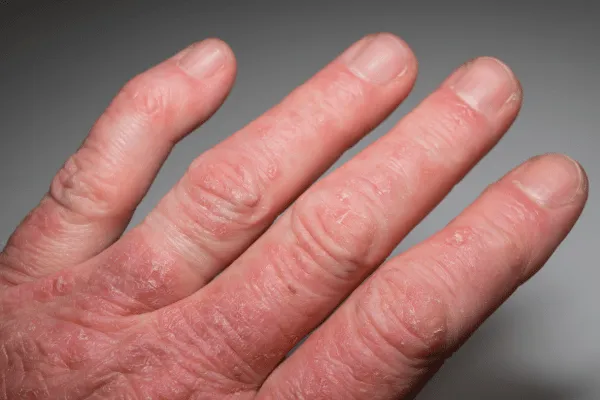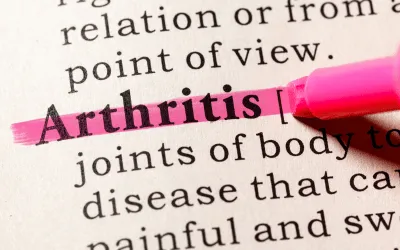About Arthritis
As the nation’s #1 cause of disability, arthritis affects nearly 60 million adults and 300,000 children. Over 100 types of arthritis and related conditions damage the joints and often other organs.
How can we assist you?
Helpful Tools for You

Guiding You Through Psoriatic Arthritis Flare-ups with Care and Expertise
When Julie Cerrone was diagnosed with psoriatic arthritis (PsA), she initially wasn't familiar with the condition, despite having experienced knee issues and consistent pain for many years. Her diagnosis came in her late 20s. One of the significant challenges she encountered was intense fatigue associated with PsA flare-ups.
Julie, a health and wellness consultant based in Pittsburgh, describes the fatigue as so overwhelming that there are days she can't get out of bed. "It feels as if I'm scaling Mount Everest when I try to walk up to my home," she shares.
Furthermore, Julie mentions that flare-ups can lead to inflamed, painful joints. She adds, "The pain might begin in my hands and progress up my forearm, even reaching my neck. It genuinely feels as if my very bones are aching.
Understanding the Complexity of Flare Symptoms
Cerrone's experience with symptoms isn't uncommon. Yet, as Dr. Philip Mease, the director of Rheumatology Clinical Research at the Swedish Medical Center and a clinical professor at the University of Washington in Seattle, highlights, there's a vast range of how flares can manifest. Some individuals might experience joint issues, others could face aggravated skin conditions or spinal discomfort. It's not always a combination; occasionally, it's a single joint issue or just a skin flare. Symptoms can include skin lesions becoming inflamed, painful, or even spreading.
While medical professionals utilize certain clinical tools like counting tender and swollen joints to evaluate symptoms, Dr. Philip Helliwell, a professor of clinical rheumatology at the University of Leeds, UK, points out that this doesn't capture the full picture. He's collaborated with GRAPPA to create a PsA flare definition that encompasses both the patient and physician viewpoints. It's worth noting that patients often describe flares in broader terms, including feelings of fatigue, sleep disturbances, emotional distress, and flu-like indications.
Over time, with experience and awareness, patients can detect early signs of a flare and adopt methods to alleviate them. Anna Moverley, MBBS, a consultant rheumatologist at the York and Scarborough Teaching Hospitals NHS Foundation Trust in the UK, mentions, "Our research indicates that as patients deepen their understanding of their condition, they become adept at self-management." Adopting measures like ample rest, pacing oneself during activities, and gentle joint care has proven beneficial.
Taking Proactive Steps Can Minimize Flare-Ups
Being proactive in understanding and managing your triggers is crucial for optimal health management. Dr. Helliwell emphasizes that a common reason for flare-ups is not adhering to the prescribed PsA medications. "Consistent medication use can significantly reduce the frequency and severity of flare-ups," he notes.
Dr. Kristina Duffin, a renowned dermatologist from the University of Utah, mentions that people with psoriasis should be cautious about skin infections and injuries. "Injuries to the skin can cause psoriasis to manifest at the wound site. Moreover, sunburns can intensify skin flare-ups, but can be avoided with proper sunwear and sunscreen application."
Furthermore, Dr. Helliwell mentions that injuries can also lead to flare-ups in joints, referencing the Koebner phenomenon. For instance, a simple knock on your heel could lead to inflammation at that specific spot.
It's beneficial to monitor PsA symptoms in conjunction with daily activities, such as dietary habits, sleep routines, and stress levels, to identify potential triggers. Cerrone, for instance, has taken charge of her health by meticulously tracking her triggers. She refrains from certain foods, integrates yoga and meditation into her routine for stress management, and exercises regularly to maintain joint mobility, enhance sleep, and manage her weight. (Note: Maintaining a healthy weight can optimize the efficacy of PsA medications.)
Since Cerrone started actively participating in her health journey, she's experienced fewer flare-ups. When they do arise, she has an arsenal of remedies including heating pads for stiffness, ice for swelling, and a specialized cream to ease inflammation and discomfort.
How Your Doctor Can Assist You
Experiencing flares can sometimes be overwhelming and might need more than just self-care. Dr. Mease suggests that if you ever feel uncertain or anxious about managing your symptoms, it's always a good idea to reach out to your doctor. As individuals become more knowledgeable about PsA and its flare management, they often become more self-reliant.
Dr. Mease mentions, “Initially, there might be a need for more regular communication. But as time progresses and you gain more experience, you'll likely become better at self-management.”
If flares become too challenging to manage, your rheumatologist has the expertise to tweak your medication, possibly introduce a new one, switch it, or prescribe stronger topicals or NSAIDs.
However, Dr. Duffin advises to always consult your dermatologist before trying new treatments. Certain treatments beneficial for psoriatic arthritis might not be suitable for psoriasis. A case in point: corticosteroids can help alleviate arthritis but might exacerbate psoriasis symptoms.
Taking an active role in your health, opting for a healthy lifestyle, and maintaining transparent communication with your doctor will enhance your chances of reducing flares.
Effects of Arthritis

Cause of Disability
In the United States, 23% of all adults, or more than 54 million people, have arthritis. It is a leading cause of work disability, with annual costs for medical care and lost earnings of $303.5 billion.

Workforce Effects
Sixty percent of US adults with arthritis are of working age (18 to 64 years). Arthritis can limit the type of work they are able to do or keep them from working at all.

Global Impact
In fact, 8 million working-age adults report that their ability to work is limited because of their arthritis. For example, they may have a hard time climbing stairs or walking from a parking deck to their workplace.
Promoting Interventions That Reduce Arthritis Pain
American Arthritis Foundation recognizes several proven approaches to reduce arthritis symptoms:
Be active. Physical activity—such as walking, bicycling, and swimming—decreases arthritis pain and improves function, mood, and quality of life. Adults with arthritis should move more and sit less throughout the day. Getting at least 150 minutes of moderate-intensity physical activity each week is recommended.
Protect your joints. People can help prevent osteoarthritis by avoiding activities that are more likely to cause joint injuries.
Talk with a doctor. Recommendations from health care providers can motivate people to be physically active and join a self-management education program. Should your arthritis be interfering with your activities of daily living you may be a candidate to receive many new treatments, and learn how to reverse the arthritis condition.
Have a question?
We're Here to Help
By providing my phone number, I agree to receive text messages from the business.


